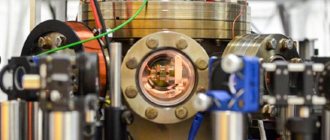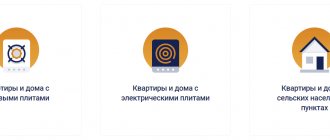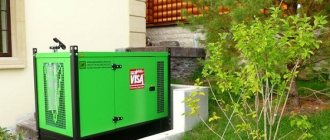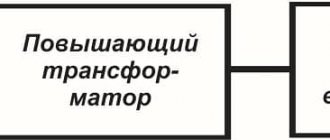Thermal energy occupies a special place in human activity, since it is used in all sectors of the economy and accompanies most industrial processes and human life. In most cases, waste heat is lost irretrievably and without any economic benefit. This wasted resource is no longer worth anything, so reusing it will help both reduce the energy crisis and protect the environment. Therefore, new methods of converting thermal energy into electrical energy and converting waste heat into electricity are more relevant today than ever.
Types of electricity generation
Converting natural energy sources into electricity, heat or kinetic energy requires maximum efficiency, especially in gas and coal power plants, to reduce CO2 emissions. There are various ways to convert thermal energy into electrical energy, depending on the types of primary energy.
Among the energy resources, coal and natural gas are used to generate electricity through combustion (thermal energy), and uranium through nuclear fission (nuclear energy) to use steam energy to turn a steam turbine. The ten largest electricity producing countries for 2022 are presented in the photo.
Table of operating efficiency of existing systems for converting thermal energy into electrical energy.
| № | Generation of electricity from thermal energy | Efficiency, % |
| 1 | Thermal power plants, CHP | 32 |
| 2 | Nuclear stations, nuclear power plants | 80 |
| 3 | Condensing power plant, IES | 40 |
| 4 | Gas turbine power plant, gas turbine power plant | 60 |
| 5 | Thermionic converters, TEC | 40 |
| 6 | Thermoelectric generators | 7 |
| 7 | MHD electricity generators in conjunction with thermal power plants | 60 |
The choice of method for converting thermal energy into electrical energy and its economic feasibility depend on energy needs, the availability of natural fuel and the sufficiency of the construction site. The type of generation varies around the world, resulting in a wide range of electricity prices.
Thermoelectric generators for industrial applications
The heat source most often used for modern industrial TEGs is the thermal energy released during the combustion of natural gas. Thermal energy removed from internal combustion engines, thermal energy of steam, and other available heat sources at industrial facilities are also used. The output power of generators is determined by the type and number of thermoelectric modules included in the generator, as well as the design of the radiators. The line of TEGs produced for industrial use provides the ability to obtain electrical power from 2 to 200 W from one generator. It should be noted that the manufacturer indicates the output power for the worst operating conditions and on average you can expect results that exceed the guaranteed ones by one and a half times or more. If the matching conditions are met, the generated power from several generators can be summed up.
In a simplified form, a thermoelectric generator can be represented as a metal heat distribution plate on the side of the heat source, a thermoelectric generator module (TGM) and a cooling radiator that removes heat passing through the module into the environment and creates the temperature difference necessary for the operation of the TGM (Fig. 1). The entire structure must be compressed with a force that ensures reliable transfer of heat from the source to the environment on the one hand and does not allow the permissible force to be exceeded during thermal expansion of the structure.
Rice. 1. Basic design of thermoelectric generator
The figure shows that compression is provided using threaded connections and a leaf spring. Springs can also be of a different design, for example twisted or disk. The purpose of the design is to ensure uniform compression force over a given temperature range. Due to its simplicity, the basic design is highly reliable and durable (service life can exceed 10 years).
Problems of traditional electric power industry
Technologies for converting thermal energy into electrical energy, such as thermal power plants, nuclear power plants, CPPs, gas thermal power plants, thermoelectric power plants, thermoelectric generators, MHD generators, have different advantages and disadvantages. The Electric Power Research Institute (EPRI) illustrates the pros and cons of natural energy generation technologies, looking at critical factors such as construction and energy costs, land, water requirements, CO2 emissions, waste, affordability and flexibility.
EPRI's findings highlight that when considering power generation technologies, there is no one-size-fits-all approach to solving all problems, but there are still greater advantages to natural gas, which is affordable for construction, has low energy costs, and produces fewer emissions than coal. However, not all countries have access to abundant and cheap natural gas. In some cases, access to natural gas is threatened due to geopolitical tensions, as has been the case in Eastern Europe and some Western European countries.
Renewable energy technologies such as wind turbines, solar photovoltaic modules produce emissive electricity. However, they tend to require a lot of land and their effectiveness results are variable and dependent on the weather. Coal, the main heat source, is the most problematic. It leads in CO2 emissions, requires a lot of clean water to cool the coolant and occupies a large area for the construction of the station.
New technologies aim to reduce a number of problems associated with power generation technologies. For example, gas turbines combined with battery backup provide contingency reserves without burning fuel, and intermittent renewable resource challenges can be mitigated by creating affordable, large-scale energy storage. Thus, today there is no single perfect method for converting thermal energy into electrical energy that could provide reliable and cost-effective electricity with minimal environmental impact.
Heat and cold energy: why thermoelectrics are needed
Thermoelectrics - materials capable of converting electrical energy into a temperature difference or, conversely, producing electricity from a temperature difference - have long been known to scientists, but new technologies can expand the scope of their application. Now thermoelectrics are used, for example, to create cold under the influence of voltage. True, here we are not talking about ordinary household refrigerators, but about the fact that an electric current is passed through some devices consisting of semiconductor materials and, as a result, active cooling occurs. Such devices can be used, including at home. For example, in picnic baskets, which can be connected to the car’s cigarette lighter, and from 12 volts they receive enough cold so that the food does not spoil.
As for electricity generation, the use of thermoelectric materials is still at the stage of experimental models. For example, a thermoelectric device is installed on a car, and the waste heat lost either by braking or by idling the engine is converted into some power. About 40% of the lost heat can thus be converted into additional electricity, into additional power for the on-board system.
The same type of device can be used in housing and communal services. If the house has heating systems, then there are conditions for creating a temperature difference. And thermoelectric materials already convert excess heat into additional electricity. True, so far they are doing this with a very low efficiency (6–7%).
Advertising on Forbes
But this may be enough to power a TV or computer.
Thermoelectric materials have been discovered quite a long time ago. First, the German scientist Thomas Johann Seebeck discovered the relationship between heat and electricity. Then thermoelectric phenomena were studied in more detail by the French physicist Jean Peltier. The sum of Seebeck's and Peltier's laws served as the basis for the first experimental observation of the thermoelectric effect. It was produced in the mid-19th century by the Russian physicist Emilius Christianovich Lenz. He took a junction of bismuth and antimony wires, placed a drop of water on it, passed electricity, and the drop froze.
Since then, quite a lot of time has passed before thermoelectric materials have found practical application. This happened thanks to our compatriot Academician Abram Fedorovich Ioffe, who back in the 1940s expressed the idea that thermoelectric materials made from very heavy elements could be quite effective for use. Ioffe proposed two compounds: bismuth telluride and lead telluride. He published his works at the turn of the 1940-1950s, after which the development of research in the field of thermoelectric materials began with the goal of creating a kind of industry that would produce these thermoelectric materials.
In order to determine how high the efficiency of certain thermoelectric materials is, a measurement system was needed. And then they came up with a dimensionless quantity called the “quality factor of a thermoelectric material.” It takes into account the effect of charge carrier transfer and the effect of heat carrier transfer in one connection.
For the compounds proposed by Academician Ioffe, the quality factor was approximately 0.6. Thanks to the efforts to alloy and dope these compounds, in a fairly short time they were brought to a higher efficiency, already equal to 0.9, and industrial production began.
Since then, all attempts to improve the efficiency of thermoelectric material were fruitless, until in the mid-90s of the 20th century a new idea was put forward by Slack, an American physicist from Rensselaer Polytechnic University. He said that since two processes play a huge role: the transport of charge carriers, that is, electrons or holes, and the transport of phonons, that is, the transport of heat, then it is necessary to create a compound in which these two types of transport will be separated. And he came up with a concept called “phonon glass - electronic crystal.”
Based on this concept, which was refined and modified (turning into a “phonon liquid and electron crystal”), new thermoelectric materials have been created over the past 15 years. Each of them has its pros and cons, but if we sum up everything we have today, then in order to create cold under the influence of electricity, there is nothing better than bismuth telluride. But in order to create electricity under the influence of temperatures in the range of 200-600 degrees, new compounds were found.
The question is how to bring these compounds to industrial technologies.
Why are these new compounds interesting? For example, they do not contain the element tellurium, which is one of the rarest elements on Earth. And to this day, not a single thermoelectric material can be produced without tellurium. That is, it became possible to replace it with more accessible substances: iron, copper, antimony, nickel, sulfur, selenium.
New directions for the use of thermoelectric materials have also emerged. Back in the 50s and early 60s of the 20th century, they began to be used in space. The idea was that the heat needed to operate a thermoelectric material would come from a radioactive source. Devices were created in which a sample of plutonium, self-heating, provided enough heat to enable thermoelectric materials to operate on autonomous systems—satellites, space objects—and provide on-board power.
Today we understand well that the use of radioactive materials is unsafe and it is certainly impossible to transfer this experience to what we call national economic objects or household objects - safety is paramount here. However, there are ideas for using alternative heat sources (such as infrared radiation from the Sun) to operate thermoelectric materials and convert thermal energy into electrical energy.
Today, many developments are underway around the world, including at Moscow State University and St. Petersburg Physics and Technology. They show that the ideas put forward by Slack in the mid-1990s are still alive, and new thermoelectric materials with higher efficiency can be created based on them.
The level of development of thermoelectric developments is currently such that the entire market is about $6 billion per year, and its strong increase is not yet expected. However, the effectiveness of thermoelectric material, as a material that operates essentially autonomously, providing a small but noticeable replacement for hydrocarbon energy sources, cannot be discounted.
Thermal power plants
At thermal power plants, high pressure and temperature steam obtained from heating water by burning solid fuel (mainly coal) rotates a turbine connected to a generator. Thus, it converts its kinetic energy into electrical energy. Operating components of a thermal power plant:
- Boiler with gas firebox.
- Steam turbine.
- Generator.
- Capacitor.
- Cooling towers.
- Circulating water pump.
- Boiler water supply pump.
- Forced exhaust fans.
- Separators.
A typical diagram of a thermal power plant is presented below.
A steam boiler is used to convert water into steam. This process is carried out by heating water in pipes with heat from burning fuel. Combustion processes are continuously carried out in the fuel combustion chamber with air supplied from outside.
A steam turbine transfers steam energy to turn a generator. Steam with high pressure and temperature pushes the turbine blades mounted on the shaft so that it begins to rotate. In this case, the parameters of the superheated steam entering the turbine are reduced to a saturated state. The saturated steam enters the condenser, and the rotor power is used to rotate the generator, which produces current. Today almost all steam turbines are of the condenser type.
Condensers are devices for converting steam into water. Steam flows outside the pipes and cooling water flows inside the pipes. This design is called a surface capacitor. The rate of heat transfer depends on the flow of cooling water, the surface area of the pipes, and the temperature difference between the water vapor and the cooling water. The process of changing water vapor occurs at saturated pressure and temperature, in this case the condenser is under vacuum, because the temperature of the cooling water is equal to the external temperature, the maximum temperature of the condensate water is near the outside air temperature.
The generator converts mechanical energy into electrical energy. The generator consists of a stator and a rotor. The stator consists of a housing that contains coils, and the magnetic field rotor station consists of a core containing a coil.
Based on the type of energy generated, thermal power plants are divided into condensing thermal power plants, which produce electrical energy, and combined heat and power plants, which jointly produce thermal (steam and hot water) and electrical energy. The latter have the ability to convert thermal energy into electrical energy with high efficiency.
Examples of thermoelectric generators for industrial applications
Universal thermoelectric generator B4-M
The universal generator B4-M allows you to receive a supply voltage of 12 V when installed on vertical hot surfaces with a temperature of +250 °C and providing a heat flow power of 300 W through the generator. The generator provides continuous round-the-clock operation without constant monitoring of its operation. The degree of protection of TEG B4-M from contact with live parts, ingress of solid foreign bodies and liquids is IP35 according to GOST 14254-96. The generator is designed to work indoors and outdoors in any weather. The generator is equipped with an armored sleeve that protects the output voltage wires from mechanical damage and overheating (Fig. 2). The armored sleeve also has an output voltage connector.
Rice. 2. Appearance and composition of TEG B4-M (1 - working surface; 2 - casing; 3 - holes for fastening; 4 - radiator fins; 5 - connector for connecting an adapter device
In real operating conditions, due to a number of factors, it is quite difficult to ensure a constant temperature of the heat source. In this regard, to protect against overheating and increase reliability, the generator has built-in thermal protection that prevents generator failure when the mounting surface is heated to +300 °C. The main technical characteristics of TEG B4-M are given in Table 1.
In the process of designing systems using thermoelectric generators, the question arises: what will be the output parameters of the generator at temperatures below the nominal one? In Fig. Figure 3 shows the dependence of the output power of the B4-M generator at a matched load on the temperature of the heat source. The graph shows the area where the thermal protection is triggered after the temperature of the heat source increases above +260 °C, at which time the heat flow through the thermoelectric module decreases and, as a consequence, the generated electrical power decreases. The tests were carried out at room temperature, under conditions of natural convection. For normal operation of TEG B4-M, the radiator must be cooled, so it is important to ensure free passage of air along its fins. Operating a generator outdoors, as a rule, gives better results due to the presence of additional natural airflow to the radiator; there is no need to protect the generator from rain and snow, since moisture on the radiator further cools it and, accordingly, increases the generated power of the device. To power electronic devices, it is recommended to use an appropriate voltage stabilizer.
Rice. 3. Typical test results of the B4-M generator
Thermoelectric generator TEG-5
Modernization of the infrastructure of industrial enterprises and the introduction of modern energy metering systems are often limited by the lack of electrical power at the installation sites of various telemetry and data transmission devices. Moreover, in many cases there is a steam line available. To obtain a source of electrical energy from the thermal energy of steam, a TEG-5 thermoelectric generator is used (Fig. 4), installed on steam pipelines of industrial facilities and having an output power of 5 W, guaranteed by the manufacturer for the most unfavorable combinations of operating conditions. The main technical characteristics are given in Table 2.
Rice. 4. Generator TEG-5: top overall dimensions; bottom view
Thermoelectric generator using gas fuel TEG-15
Thermoelectric generator using gas fuel TEG-15 (Fig. 5) is designed to generate electrical energy to power gas metering equipment by converting the thermal energy of burning gas fuel into electrical energy. The generator is successfully operated at gas distribution points and provides autonomous power supply for information collection and transmission systems, independent of external sources of electrical energy.
Rice. 5. Thermoelectric generator TEG-15 at gas distribution points
The use of gas-fuelled thermoelectric generators can reduce costs by eliminating the need to connect measuring and transmitting equipment to power lines. The generators are equipped with rechargeable batteries and a device for monitoring the charge and operation of the device. As indicated in Table 3, the rated power of the generator is 15 W. This power is enough to power modern electronic devices for metering gas flow and parameters. If more power or redundancy is required, generators can be cascaded.
Nuclear power plants
Nuclear power plants use the heat released during nuclear fission to heat water and produce steam. The steam is used to spin large turbines that generate electricity. During fission, atoms are split to form smaller atoms, releasing energy. The process takes place inside the reactor. At its center is a core containing uranium 235. Fuel for nuclear power plants is obtained from uranium, which contains the isotope 235U (0.7%) and non-fissile 238U (99.3%).
The nuclear fuel cycle is a series of industrial steps involved in the production of electricity from uranium in nuclear power reactors. Uranium is a relatively common element that is found throughout the world. It is mined in a number of countries and processed before being used as fuel.
Activities related to the production of electricity collectively refer to the nuclear fuel cycle for converting thermal energy into electrical energy at nuclear power plants. The nuclear fuel cycle begins with the mining of uranium and ends with the disposal of nuclear waste. When reprocessing used fuel as an option for nuclear power, the steps form a true cycle.
Uranium-plutonium fuel cycle
To prepare fuel for use at nuclear power plants, processes for extraction, processing, conversion, enrichment and release of fuel elements are carried out. Fuel cycle:
- Burnout of uranium 235.
- Slaging – 235U and (239Pu, 241Pu) from 238U.
- During the decay of 235U, its consumption decreases, and isotopes are obtained from 238U during the generation of electrical energy.
The cost of fuel rods for VWR is approximately 20% of the cost of generated electricity.
After the uranium spends about three years in the reactor, the used fuel can go through another use process, including temporary storage, reprocessing and recycling before the waste is disposed of. Nuclear power plants provide direct conversion of thermal energy into electrical energy. The heat generated by nuclear fission in the reactor core is used to turn water into steam, which turns steam turbine blades to power generators that produce electricity.
The steam is cooled into water in a separate structure in a power plant called a cooling tower, which uses water from ponds, rivers or the ocean to cool the clean water of the steam power circuit. The cooled water is then reused to produce steam.
The share of electricity generation at nuclear power plants, in relation to the overall balance of production of their different types of resources, in the context of some countries and in the world - in the photo below.
Gas turbine power plant
The operating principle of a gas turbine power plant is similar to the operation of a steam turbine power plant. The only difference is that a steam turbine power plant uses compressed steam to rotate the turbine, while a gas turbine power plant uses gas.
Let's consider the principle of converting thermal energy into electrical energy in a gas turbine power plant.
In a gas turbine power plant, air is compressed in a compressor. This compressed air then passes through the combustion chamber, where a gas-air mixture is formed and the temperature of the compressed air rises. This high temperature and high pressure mixture passes through a gas turbine. In the turbine, it expands sharply, receiving kinetic energy sufficient to rotate the turbine.
In a gas turbine power plant, the turbine shaft, alternator and air compressor are common. The mechanical energy created in the turbine is partially used to compress the air. Gas turbine power plants are often used as a backup supplier of auxiliary energy to hydroelectric power plants. It generates auxiliary power during the startup of the hydroelectric power plant.
A material has been created that converts heat into electricity with record efficiency
Researchers from Austria, Japan and China have presented a thermoelectric converter with an efficiency almost twice that of existing analogs. The researchers' article was published in the journal Nature.
Thermoelectric materials can convert heat into electrical energy. This is due to the so-called Seebeck effect: if there is a temperature difference between the two ends of such a material, then it can create an electric current in the circuit in which it is connected. The amount of electrical energy that can be produced at a given temperature difference is measured by the figure of merit ZT: the higher this figure, the better its thermoelectric properties.
The best thermoelectrics today have a ZT value of 2.5 to 2.8. The new material developed by scientists doubles these indicators: its ZT ranges from 5 to 6. This record-breaking composite consists of thin layers of iron, vanadium, tungsten and aluminum deposited on a silicon crystal.
“A good thermoelectric material must exhibit a strong Seebeck effect, and it must meet two important requirements that are very difficult to combine,” emphasizes one of the researchers, Professor Ernst Bauer at the Institute of Solid State Physics at the Technical University of Vienna. - On the one hand, it must conduct electricity as well as possible, and on the other hand, it must tolerate heat as poorly as possible. This is a difficult task because electrical conductivity and thermal conductivity are usually closely related.”
The atoms in the layers of this material are arranged in a regular face-centered cubic lattice. However, when a thin layer is applied to a silicon crystal, an amazing effect is observed: their structure radically changes. Although the atoms still have a cubic lattice, it now appears to be body-centered, and the distribution of different types of atoms becomes completely random. This mixture of regularity and irregularity in the arrangement of atoms also changes the electronic structure, which determines the movement of electrons in a solid.
Electric charge moves through the material in special portions - Weyl fermions - massless particles that carry disturbances of the crystal lattice and electrons. On the other hand, lattice vibrations, which transfer heat from areas of high temperature to areas of low temperature, are slowed down due to irregularities in the crystal structure. Therefore, the thermal conductivity of the material decreases.
The new material, according to scientists, is so effective that it could be used to power sensors or even small computer processors. Instead of connecting small devices to cables, they could generate their own electricity from temperature changes.
Advantages and disadvantages of a gas turbine power plant
The design of a gas turbine power plant is much simpler than a steam turbine power plant. The size of a gas turbine power plant is smaller than that of a steam turbine power plant. In a gas turbine power plant there is no boiler component and hence the system is less complex. There is no steam, so no condenser or cooling tower is required.
The design and construction of powerful gas turbine power plants is much simpler and cheaper, capital costs and operating costs are significantly lower than the cost of a similar steam turbine power plant.
The permanent losses in a gas turbine power plant are significantly less compared to a steam turbine power plant because in a steam turbine, the boiler power plant must operate continuously even when the system is not supplying load to the grid. A gas turbine power plant can be started almost instantly.
Disadvantages of a gas turbine power plant:
- The mechanical energy created in the turbine is also used to run the air compressor.
- Since the majority of the mechanical energy produced in the turbine is used to drive the air compressor, the overall efficiency of a gas turbine power plant is not as high as an equivalent steam turbine power plant.
- The exhaust gases from a gas turbine power plant are very different from those from a boiler.
- Before the turbine is actually started, the air must be pre-compressed, which requires an additional power source to start the gas turbine power plant.
- The gas temperature is quite high at a gas turbine power plant. This results in the system having a shorter lifespan than an equivalent steam turbine.
Due to its lower efficiency, a gas turbine power plant cannot be used for commercial power generation; it is usually used to supply auxiliary power to other conventional power plants, such as hydroelectric power plants, for example.
Thermionic converters
They are also called thermionic generator or thermoelectric motor, which directly convert heat into electricity using thermionic emission. Thermal energy can be converted into electrical energy with very high efficiency through a temperature-induced electron flow process known as thermionic radiation.
The basic operating principle of thermionic energy converters is that electrons evaporate from the surface of a heated cathode in a vacuum and then condense on a cooler anode. Since the first practical demonstration in 1957, thermionic energy converters have been used with a variety of heat sources, but all require operation at high temperatures - above 1500 K. While operation of thermionic energy converters at relatively low temperatures (700 K - 900 K) is possible, The efficiency of the process, which is typically >50%, is significantly reduced because the number of electrons emitted per unit area from the cathode depends on the heating temperature.
For traditional cathode materials such as metals and semiconductors, the number of electrons emitted is proportional to the square of the cathode temperature. However, a recent study demonstrates that the heat temperature can be reduced by an order of magnitude by using graphene as a hot cathode. The findings show that a graphene-based cathode thermionic converter operating at 900 K can achieve an efficiency of 45%.
A schematic diagram of the electron thermionic emission process is shown in the photo.
Graphene-based TIC, where Tc and Ta are the cathode temperature and the anode temperature, respectively. Based on the new thermionic emission mechanism, the researchers suggest that a graphene-based cathode energy converter could find application in recycling industrial waste heat, which often reaches a temperature range of 700 to 900 K.
The new model presented by Liang and Eng could benefit graphene-based energy converter designs. Solid state power converters, which are basically thermoelectric generators, typically operate inefficiently in the low temperature range (less than 7% efficiency).
Thermoelectric generator GTG-200
GTG-200 (Fig. 6) is an autonomous source of electricity running on natural gas, propane or a propane-butane mixture. Used to complete autonomous power supplies (APS) with a power of 200–2000 W.
Rice. 6. Design of thermoelectric generator GTG-200
The high power generated by the generator is determined by the use of medium-temperature thermoelectric generator modules of the Mars series, which provide an output power of up to 45 W (basic version 40 W) and are intended for use in conjunction with a heat source with a temperature of +530 °C and a heat flow power of 650 W. The main parameters of this generator module are shown in Table 4, appearance in Fig. 7, load characteristic in Fig. 8.
Rice. 7. Mars series medium temperature generator module
The warranty period for the Mars series generator module is 10 years.
Rice. 8. Typical current-voltage characteristic of the Mars generator module
Thermoelectric generators GTG-200 are used as maintenance-free autonomous sources of direct current electricity and heat as part of independent autonomous power supplies for stations for cathodic protection of gas pipelines against corrosion, powering metering units isolated from stationary power supply, powering automation, telemechanics and technological communications of main gas pipelines. Generators run on natural or liquefied gas. To control the operation of the GTG-200 thermoelectric generator as part of an autonomous power source, a voltage stabilization and control unit is used, designed for:
- stabilization and limitation of battery charging voltage;
- turning on and off the solenoid valve for gas supply to the generator;
- supplying voltage to the high-voltage unit for electric spark “ignition” of the gas burner of the generator;
- control of the power generated by the generator;
- ensuring parallel operation of several generators.
Operating conditions for the GTG-200 generator:
- climatic version O;
- placement category 2 according to GOST 15150-69;
- ambient air temperature –50…+50 °С;
- relative air humidity up to 98%.
The main parameters of the device are shown in Table 5, and the appearance with the air duct and gas exhaust pipe is shown in Fig. 9.
Rice. 9. Appearance of the GTG-200 generator
Thermoelectric generators
Recycling energy waste has become a popular goal for researchers and scientists who are coming up with innovative methods to achieve this goal. One of the most promising areas is thermoelectric devices based on nanotechnology, which look like a new approach to saving energy. The direct conversion of heat into electricity or electricity into heat is known as thermoelectricity, based on the Peltier effect. To be precise, the effect is named after two physicists - Jean Peltier and Thomas Seebeck.
Peltier discovered that current sent into two different electrical conductors that are connected at two junctions will cause one junction to heat up while the other junction cools. Peltier continued his research and found that a drop of water could be made to freeze at the bismuth-antimony (BiSb) junction simply by changing the current. Peltier also discovered that electric current can flow when there is a temperature difference across the junction of different conductors.
Thermoelectricity is an extremely interesting source of electricity due to its ability to convert heat flow directly into electricity. It provides energy converters that are easily scalable and have no moving parts or liquid fuel, making them applicable in almost any situation where large amounts of heat tend to be wasted, from clothing to large industrial facilities.
Nanostructures used in semiconductor thermopile materials will help maintain good electrical conductivity and reduce thermal conductivity. Thus, the performance of thermoelectric devices can be increased through the use of nanotechnology-based materials using the Peltier effect. They have improved thermoelectric properties and good solar energy absorption capacity.
Applications of Thermoelectricity:
- Energy suppliers and sensors in the ranges.
- Burning oil lamp driving a wireless receiver for remote communication.
- Application of small electronic devices such as MP3 players, digital watches, GPS/GSM chips and pulse meters with body heat.
- Fast cooling seats in luxury cars.
- Removing waste heat from cars by converting it into electricity.
- Converting waste heat from factories or industrial sites into additional power.
- Solar thermoelectrics can be more efficient than photovoltaics for generating electricity, especially in areas with less sunlight.
MHD power generators
Magnetohydrodynamic power generators generate electricity through the interaction of a moving fluid (usually ionized gas or plasma) and a magnetic field. Since 1970, MHD research programs have been conducted in several countries with a special focus on the use of coal as a fuel.
The underlying principle of MHD generation is elegant. Typically, electrically conductive gas is created at high pressure by burning fossil fuels. The gas is then directed through a magnetic field, resulting in an electromotive force acting within it according to Faraday's law of induction (named after the 19th century English physicist and chemist Michael Faraday).
The MHD system is a heat engine that involves expanding gas from high to low pressure in the same way as in a conventional gas turbine generator. In an MHD system, the kinetic energy of the gas is converted directly into electrical energy as it is allowed to expand. Interest in MHD generation was initially sparked by the discovery that plasma interaction with a magnetic field can occur at much higher temperatures than is possible in a rotating mechanical turbine.
The performance limits in terms of efficiency in heat engines were established at the beginning of the 19th century by the French engineer Sadi Carnot. The output power of an MHD generator for each cubic meter of its volume is proportional to the gas conductivity product, the square of the gas velocity and the square of the strength of the magnetic field through which the gas passes. In order for MHD generators to operate competitively, with good performance and reasonable physical dimensions, the plasma conductivity must be in the temperature range above 1800 K (about 1500 C or 2800 F).
The choice of MHD generator type depends on the fuel used and the application. Abundant coal reserves in many countries around the world are facilitating the development of carbon-based MHD systems for electricity generation.
Electrical work and power. Converting electrical energy into thermal energy
ELECTRICAL OPERATION AND POWER.
CONVERSION OF ELECTRICAL ENERGY INTO THERMAL ENERGY.
If an electrical circuit is closed, an electric current will arise in it. In this case, the energy of the power source is consumed, and it does work to move the charge throughout the closed circuit.
According to Ohm's law for a section of a circuit:
The quantity that characterizes the speed of work is called power.
Power supplied by the source:
Power loss inside the source:
Consumer power:
Power unit: [W*s] = [J]
In practice, a larger unit is used: [kW*h] = 3600000 W*s
When there is a current in a circuit with resistance R, electrons, moving under the influence of the field, collide with ions of the crystal lattice of the conductor. In this case, the kinetic energy of the electrons is transferred to the ions, which leads to an increase in the amplitude of the oscillatory motion of the ions, and, consequently, to heating of the conductor. The amount of heat released in the conductor:
Q = I*Rt.
The given dependence is called the Lenz-Joule law: the amount of heat released when current passes in a conductor is proportional to the square of the current strength, the resistance of the conductor and the time the current passes.
The conversion of electrical energy into heat is of great practical importance and is widely used in various heating devices, both in industry and in everyday life. However, heat losses are often undesirable because they cause wasted energy, for example in electrical machines, transformers and other devices, which reduces their efficiency.
CURRENT LOADING OF WIRES AND PROTECTING THEM FROM OVERLOADS
Let's consider the process of heating wires in an electrical circuit. At the first moment, when the temperature of the wire is equal to the ambient temperature, all the heat released by the current goes to heating the wire. As a result, its temperature rises rapidly. As it grows, the amount of heat given off by the wire to the environment increases, and the amount of heat spent on heating decreases. Finally, the moment of establishing temperature balance comes: the amount of energy given is equal to the amount of energy received and the increase in temperature of the wire stops.
The temperature of the wire corresponding to the moment of balance is called steady-state.
The time during which the wires heat up to a steady temperature depends on their geometric dimensions and cooling conditions. Heating of the wire is allowed to temperatures of the order of 60-80 ° C. In accordance with the permissible temperature, the concept of permissible current is introduced.
The permissible current is the current at which the highest permissible temperature is established.
A short circuit is the connection of two bare wires of different potentials.
During normal operation (Fig. 2.1, a):
In case of a short circuit (Fig. 2.2,b):
The short circuit current can be almost tens or hundreds of times higher than the rated current of the circuit, which can cause thermal and mechanical damage to its individual elements. To protect the circuit from overloads, fuses (inserts) are used, which melt at a certain current, breaking the electrical circuit.
The circuit diagram for connecting the fuse is shown in Fig. 2.2.
By nominal we mean an operating mode in which the voltage, current and power in the elements of the electrical circuit correspond to the values for which they are designed by the manufacturer. At the same time, the best working conditions are guaranteed (efficiency, durability, etc.).
In addition to the nominal operating mode of the source, there are:
- short circuit mode idle mode.
Short circuit mode is a mode in which the voltage at the external terminals of the source is zero.
The no-load mode of the source is the mode in which the current in it is zero.
VOLTAGE LOSS IN WIRE
When transmitting energy through long-distance wires (Fig. 2.10), one has to take into account their resistance, at which a noticeable voltage drop occurs:
At a given voltage U1 at the line input, the voltage at the load at the rated load current: ДU = U 1 – U 2
The voltage drop DU must not exceed certain values. So, for a lighting load, the DU value should not exceed 2% of the rated voltage. Using the given value DU, we find the required cross-sectional area of the wire S:
The line load is specified in the form of power consumption, so the absolute value of voltage loss is replaced by a relative value:
Then,
Transmission line efficiency:
CALCULATION OF COMPLEX ELECTRICAL CIRCUITS
A complex circuit is an electrical circuit that cannot be reduced to a series and parallel connection of consumers.
As an example, consider the complex circuit in Fig. 2.13.
The problem comes down to determining the currents in all its branches, in our case the currents I1 I2 I3. The EMF and resistance values are specified.
There are several methods for calculating complex circuits. Let's look at some of them.
METHOD OF NODE AND CONTOUR EQUATIONS.
(KIRCHHOFF EQUATION METHOD)
Methodology for solving a problem using this method.
The direction of the currents is chosen arbitrarily. If, as a result of the solution, individual currents turn out to be negative, this will mean that in reality they flow in the direction opposite to the chosen one. To determine three unknown currents, it is necessary to create three independent equations relating these currents. Based on Kirchhoff’s first law for node “c”:
I1 + I2 – I3 = 0
The equation for node "f" is:
I3 - I2 - I1 = 0,
that is, it coincides with the equation for node “c”.
If a complex chain has n nodes, then the number of equations that can be compiled based on Kirchhoff’s first law is one less:
n - 1.
The missing equation can be obtained based on Kirchhoff's second law. For contour abcf when traversing clockwise:
If the direction of bypassing the circuit coincides with the direction of the emf and currents, then these emfs and the corresponding voltage drops are taken with a plus sign.
When composing equations according to Kirchhoff’s second law, contours must be chosen so that each of them differs in at least one branch.
Conclusion: the method of Kirchhoff's equations comes down to compiling a system of equations in accordance with Kirchhoff's first and second laws and solving this system with respect to unknown currents.
If an electrical circuit contains “B” branches, then in general it is necessary to determine the “B” currents, i.e., the currents in each of the branches. Therefore, the total number of equations according to Kirchhoff’s first and second laws must be equal to “B”.
With the number of nodes “U”, the number of independent equations according to Kirchhoff’s first law will be “U – 1”, therefore, the remaining “P” equations must be compiled according to Kirchhoff’s second law:
P = B - (U - 1).
The total number of equations compiled according to Kirchhoff's first and second laws is equal to the number of branches, i.e., the number of unknown currents; this allows you to find currents in all branches of the electrical circuit.
LOOP CURRENT METHOD
If a complex chain contains quite a few nodes and contours, then its calculation using Kirchhoff’s first and second laws will involve solving a large number of equations. By introducing the concept of loop currents, it is possible to reduce equations compiled according to Kirchhoff’s laws to a system of equations compiled only for independent loops.
Loop currents are understood as conditional currents that close in the corresponding circuits.
The loop current is designated by the letter I with a Roman index corresponding to the number of the independent loop. The loop current is equal to the current in the branch through which it flows individually.
Consider the circuit diagram shown in Fig. 2.14.
This circuit has two independent circuits I and II, each of which carries currents I1 and I11. The directions of these currents are chosen arbitrarily, for example, clockwise. From examination of the circuit (Fig. 2.14) it is clear that the real currents in the external branches are equal to the contour ones: I1 = I1 I3 = I11
The current in the internal branch is equal to the difference in the loop currents: I2 = I1 - I11
To determine the loop currents, we create two equations:
The intrinsic resistance of a circuit is the sum of all resistances in each independent circuit.
Intrinsic resistance is designated by the letter R with a double index corresponding to the number of the circuit to which it belongs.
The mutual resistance of the circuits is the resistance that is simultaneously included in each of two adjacent circuits.
Mutual resistance is designated by the letter R with two indices corresponding to the numbers of adjacent circuits.
The circuit EMF is the algebraic sum of all the EMF in each independent circuit.
Conclusion: the loop current method comes down to compiling and solving a system of equations obtained only by Kirchhoff’s second law in relation to the concepts of loop currents, resistance and EMF.
NODE VOLTAGE METHOD.
Often in a complex circuit there are only two nodes, as, for example, in the circuit in Fig. 2.14. In this case, the calculation of the circuit is greatly simplified, since it is enough to determine the so-called node voltage Uab. (Fig. 2.15). After this, the currents in the branches are found as follows:
All currents in the branches are directed to the node, the potential of which is conventionally taken to be zero. Nodal voltage:
where G is the conductivity of the corresponding branches.
If the source emf is directed towards the node, then the product EG is taken with a minus sign. The currents in the branches are determined as follows:
Conclusion: the nodal stress method comes down to compiling a system of equations compiled only according to Kirchhoff’s first law; From these equations, the voltages in the nodes of the electrical circuit circuit are determined relative to a certain basic node, the potential of which is initially assumed to be zero, and the currents in the branches connecting the nodes are found according to Ohm’s law.
SUPERPOSITION METHOD
This method is based on the principle of superposition, which states: the current in any branch of a linear electrical circuit containing several sources of EMF is equal to the algebraic sum of the currents in this branch under the action of each source separately. In this case, the remaining sources are replaced by resistors having resistances equal to the internal resistances of the replaced EMF sources.
The validity of this principle follows directly from the expression:
Indeed, if in this expression we put all the emf, except for E1, equal to zero, then we obtain a partial current I/k in the K-th branch, caused by the action of only the emf. E1
If we assume E2 ≠ 0, and the remaining emfs are equal to zero, then we obtain a partial current I//K caused by the action of only the emf E2, etc.
The algebraic sum of all partial currents will give the real current flowing in the k-th branch.
The superposition principle also applies to voltages, since they are linearly related to currents. This principle cannot be applied to the calculation of power, since power is not a linear, but a quadratic form of current or voltage: if a current I = I1 + I2 flows through a section of a circuit with resistance R, then the power is equal to:
P = RI2 = R (I1 + I2)2
and not RI12 + RI22, as formally would follow from the superposition principle.
Conclusion: the superposition method allows you to find currents in branches without drawing up and solving a system of equations, but directly according to Ohm’s law. In this case, first, the partial currents from the action of each EMF source are found separately, taking the remaining EMF equal to zero and leaving only their internal resistances in the circuit, and then the real currents as algebraic sums of the partial currents.
Get text











